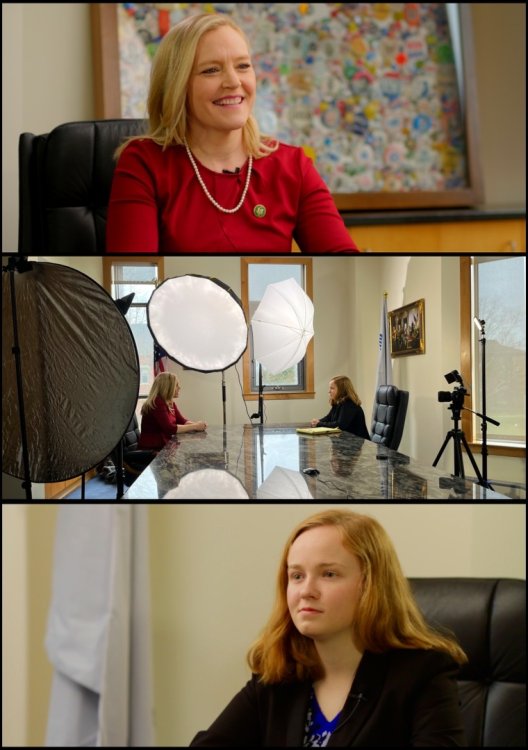Leaderboard
Popular Content
Showing content with the highest reputation on 04/02/2023 in all areas
-

Panasonic S5 II (What does Panasonic have up their sleeve?)
deezid and 2 others reacted to hyalinejim for a topic
Personally, I would never, ever in a million years add sharpening to a video clip.3 points -

Fx30
filmmakereu and one other reacted to Django for a topic
archaic motion? 24p is still the current cine standard. double frame rate output is literally what is called the soap opera effect: Creating frames in-between the 24 original frames makes the movie (24FPS) look like a soap opera (30/60FPS), and this is something that many viewers don't like. Why does 60fps look like a soap opera? It's due to motion. Soap Operas use cheaper cameras that shoot in 60 FPS rather than film that is 24 FPS. Basically, you've become accustomed to the dreamlike motion of 24 FPS being interpolated for 60 Hz TVs and now attribute higher frame-rates like 48 FPS to that of a lower quality production. haven't we been through this before? not sure why you're getting so offended, you're the one throwing the word "cinematic" around. Sure takes more than a LUT to achieve the look. correct fps is a good place to start but hey keep ignoring this advice and do as you please. just don't get mad if people call out the videoish look of such motion, I'm far from being alone on this. in fact you are probably the only person I know around here or even on YT who consistently outputs 60p on a cine cam.2 points -
Sony lack of firmware updates is getting completely ridiculous!
SRV1981 and one other reacted to newfoundmass for a topic
It's one thing if the hardware can't support it, or if the camera is ancient, but the only reason these new features aren't being added to recent cameras via firmware is because Sony doesn't want to. As you said, they are features you can live without, but that's not really the point. These companies want brand loyalty without giving it back in return.2 points -

Sony lack of firmware updates is getting completely ridiculous!
Rinad Amir and one other reacted to Amazeballs for a topic
Listen, guys. I love my A7S3. Yes I would love to have new dynamic stab, and better AF. I also would want a new video oriented clean on-screen menu layout, but I can live without it. The camera still rocks. The problem is not about it beeing crucial feautures, its the attitude to the community, to us, its customurs. And this attitude stinks. In our age not giving your hardware avalible software updates is really really unexusable. Showing support to your older product is showing love to your customers. And feeling abandoned for a new youger girlfriend is not exactly a stimulating emotional experience.2 points -
im unemployed, check out my reel! https://vimeo.com/7976428222 points
-
8 vs 10 bit
Chxfgb and one other reacted to newfoundmass for a topic
Unless you're shooting in a log profile or doing lots of color grading 8-bit is fine. I film the majority of my event work in 8-bit because 10-bit just isn't necessary when I don't need to do a ton of corrections. I film in the natural color profile on my Lumix cameras, set my custom white balance, and I'm good to go. 10-bit is great to have for narrative, commercial, and even corporate/interviews where you're going for a certain "look." It is also very good for green screen work. Since getting the Lumix S5 and full v-log I've filmed more in 10 bit. I really like it, but it's just not necessary for a lot of stuff.2 points -
Share our work
inspiredtimothy reacted to FHDcrew for a topic
Let’s share our work guys! I’ll start. Here is an interview I shot and lit the other day, featuring a congresswoman from Indians! One camera was a Nikon z6 recording into an Atomos ninja v. With a Tamron 45mm 1.8. The other was actually the ancient, cheap Canon 7D fitted with a Canon 85mm 1.2 shot at f/2.5!1 point -
The 17-55mm or the 10-22mm APS-C lenses definitely work for video on the R5C and anecdotely I've heard the IQ hit is miniscule.1 point
-
I am sorry, I will not cripple motion for people like you who judge a look solely by archaic motion. And the fact that the silly Sony camera made for vloggers on YouTube does this might actually be cause for you to rethink your judgement. It is ludicrous to say the video has a soap opera camcorder look. Did you learn this in film school? - "the dreaded soap opera look". Give me a break.1 point
-
The FX30 is great. A perfect camera for me. Originally bought it to use alongside my FS7M2. Now, if the job doesn't require the bigger camera, I'll just use the FX30. The FX30 is so much lighter and image is also better. The pricing is great too. Much more affordable than the FX3. Super 35 is not an issue for me because I'm too poor to switch to all full frame lenses. But if you want a hybrid, keep in mind it doesn't have mechanical shutter. Still very decent for taking some snapshots. Also 4K 120P has big crop. If you film a lot of slow motion, get the A7S3 or the FX3 instead.1 point
-
Why ? To see that both the A7III and S5II can't be sharpened (in camera or in post) because of the huge amount of noise reduction and detals filtering. The bad light is used to see how the cameras perform in difficult situations and how they use their noise reduction algorithm. Seriously I can see the difference even when viewing in 1080P, both the A7III and the S5II smooth details a lot compared to the S5, to the point that adding sharpness in post just look like upscaled from a lower resolution. If you can't see the difference and use the Panasonic standard profiles, you can buy the camera with confidence, but personally I see a big difference with the previous Panasonic S cameras. It is the most aggressive NR, and over sharpening (especially in 6K) i've ever seen on any Panasonic camera to date.1 point
-
@Kisaha@92F Sarah Jeanette Connor was sane after all ;- )1 point
-
Sony lack of firmware updates is getting completely ridiculous!
92F reacted to newfoundmass for a topic
I'd also argue that they've already got people's money, so they don't care. They want you to buy the next camera, not increase the value of the camera you've already bought. And it works, because more than a couple notable YouTubers ended up getting the A1 and the A7RV after selling the A7SIII, which I'm sure then influenced others to do the same since that's how it works. I just wish more people cared about this shitty behavior.1 point -
The regular S23 4K cDNG in Motioncam blew me away. Looks better than anything than I've ever seen from any phone, crappy and heavily processed "8K" phone included.1 point
-

Sony lack of firmware updates is getting completely ridiculous!
Juank reacted to Andrew Reid for a topic
I'd rather they DIDN'T turn the A7S III into a ZV-E1 Nearly all the new features are a dumb bag of shite designed to help people with no effort to make better vlogs! What do you want from the ZV-E1 that isn't in the A7S III that you really need? As for the reason behind a lack of firmware updates, it's because the A7S III is still selling well and is already feature-packed... so it doesn't matter what Gerald says really, if it is selling well, they don't need to change it. They'd just give me a PR line and mention the firmware updates they have done, like the a1 10bit 422. I agree with you Sony is lazy when it comes to nice firmware updates vs the others, but the best option is to sell the camera and buy a Panasonic or a Fuji if you are unhappy with it. Best way to get Sony to change. On the other hand I do think the A7S III is hardly lacking in features?1 point -
8bit 100mbit HD codec from the GH5 is pretty good for a lot of stuff. Twisting colours is pretty solid with it. 100mbit on the 4K from my GX85 is amazingly good for grading. These are in 709 acquisition. Wouldnt film VLog L in 8bit. 100mbit 4K on the A7SII was some of the worst codecs I have had to colour grade for someone. 12 444 all intra hd on the C300II can fall apart badly in bad exposure giving temporal noise reduction artefacts galore. So it´s not 8bit vs 10bit but rather the quality of codec vs codec.1 point
-
eh, if you're rolling for hours (days even!) covering some random small business conference in a hotel that's only going to be put on YT (or perhaps even only used internally) then 8bit is perfectly fine.1 point
-
Follow Noam Kroll: https://noamkroll.com/ He talks a lot about making films in that general budget range. I'd say the key tips are: Everything on the cheap. A short shooting schedule. Doing a lot of it yourself (even perhaps all of the post!). Sometimes he'll even OMB then entire shoot. Or just have merely an extra crewperson or three, no more. Personally if I was given US$30K and told to produce a feature film then: 1) I'd find someone to direct it for free 2) leads would have nothing up front (maaaybe if we could get "a name" for half a day, we'd pay for that. But realistically, that isn't possible on this budget. But depends on what your connections are) 3) find a keen aspiring DoP wiling to shoot it "for the reel" (who will use their own camera gear, or mine). Have a second keen aspiring "DoP" -ish person who can work under the actual DoP as the B Cam Op. Won't be too reliant upon the B Cam, but extra coverage might save us in the edit, as we won't be slowing down to get that during the normal shoot itself. (yeah, shooting multicam will screw over the Sound Dept, but that's going to be me... I'm ok with that compromise. Plus I will have the absolute power on the film set that if I need to say "no, we can't shoot this scene for sound with multicam" I will be listened to and obeyed. Thus that reduces a lot the risks and downsides of shooting multicam) 4) have a couple of keen film students as PAs / Unit / LX Assists / Grips / Boom Op / etc to give extra helping hands, I wouldn't count upon them showing up or being moderately competent, but if they are then that is a nice bonus. 5) make a tough decision about if we can afford paying a token amount to a 1st AC and/or a Gaffer and/or Boom Op 6) work myself "for free" as the Sound Mixer (I know this not an option most people have, and normally you'd have to prioritize this above paying a 1st AC or Gaffer), as I'd be doing this just to get a successful production and a substantial producer credit on my IMDB (and maybe something for me on the backend too, if this project succeeds) 7) shoot it under two weeks, preferably in under a week 8 ) lean hard on the director and/or DoP to be doing their own editing / color grading / VFX for free themselves (or taping into their network to find someone). For example, ideally this film has no VFX, and the director might do the edit, and the DoP will do the color grade.1 point
-
Hacked cameras are fine if you’re a hobbyist YouTube filmmaker and you like experimenting but on paid sets, things like Sdi, shutter angle, video assist tools, timecode, full hdmi, long battery life, reliability and a big screen definitely helps, especially on long 12hr days.1 point
-

No-Budget Movies Are Taking Over: Welcome to a New Era of Filmmaking
aaa123jc reacted to Tim Sewell for a topic
Hmmm. My understanding is that a major reason for the almost exclusive use of Arri for serious movie making is the fact that if the camera goes down the Arri network is so good that another will be delivered within hours. I should have thought that kind of protection against downtime would be just as important (if not more) on a low-budget production.1 point -
gem. bump:) reread a bit. didnt understand much of the techincalities. still fascinated. beautiful stuff. thanks for posting this back then! @Cosimo1 point
-

Which cameras have the most pleasing grain structure?
ntblowz reacted to QuickHitRecord for a topic
There aren't that many. Off the top of my head: Sony F35 - Super35 Sony SRW-9000PL - Super35 Sony Genesis - Super35 Digital Bolex D16 - Super16 Ikonoskop A-Cam dII - Super16 And then you get into 2/3" CCDs, and there are a ton of those. Here's a good place to look for the Sony models. On the Panasonic side, there were the HPX and Varicam bodies. Toshiba, JVC, and Ikegami also had 2/3 CCD cameras, but they were mostly standard definition. There were a handful of 1/2" CCD camcorders, mostly from Sony as I recall. 1/3" CCD sensors were mostly found in fixed zoom lens cameras like the HVX200, FX1, Z1U, DVX100, Canon XL/XH cameras, and some of the JVC GY cameras. But 1/3 sensors are pretty small. Compared to today's mirrorless cameras, these cameras were mostly very large and meant to be operated on shoulder or tripods. The smallest and most manageable of the bunch was the Digital Bolex, which now goes for around $7K used. The Sony F55 is a MOS sensor with global shutter, not a CCD camera. If you'd like to have a small CCD camera to try out, I'd recommend the diminutive and inexpensive Lumix FZ47 (FZ48 in the UK). It's fixed lens and can't record in 24P or 25P, but it does shoot in 1080P and the 1/2.3" sensor is larger than any of the 1/3" cameras. And the image stabilization is surprisingly good, which is useful for the ~600mm equivalent zoom. Here's some footage I shot: I personally love the camera, but I wouldn't say that the grain is good at all. If you freeze-frame the footage, you'll see a ton of temporal ghosting and macroblocking. But in motion, it's one of my favorites. And here are some of my photos with it (JPEG only, the camera does not shoot RAW): https://distanceandelevation.com/blog/2021/8/9/bandontoportorford1 point -
APSC Lens on Full Frame?
Kubrickian reacted to SRV1981 for a topic
How do some of you see this as a way to save money ? Grab a Sigma 18-50 for an A7IV and use on 35mm mode and also get a 35mm fast prime for FF ?0 points





